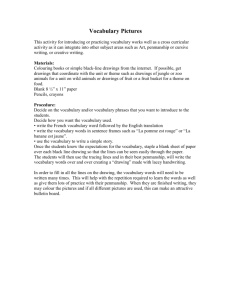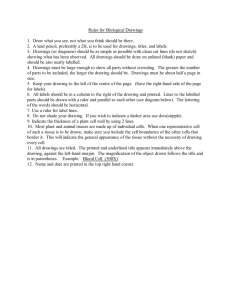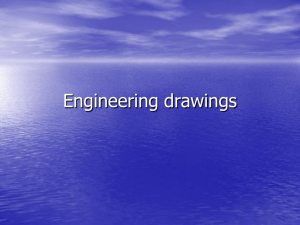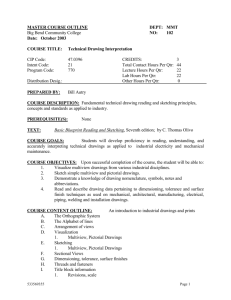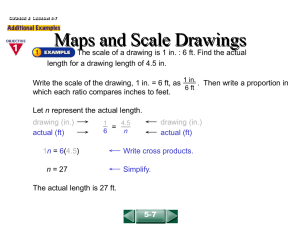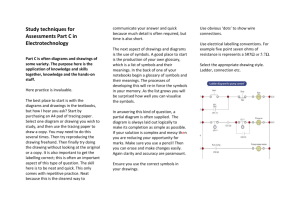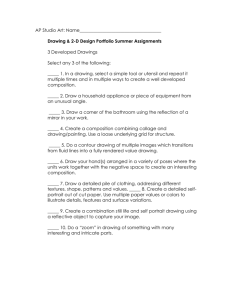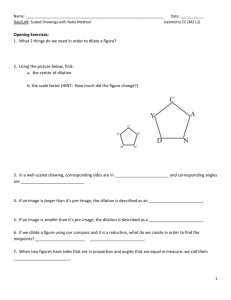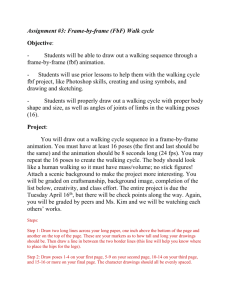Geo-Unit4-Lesson3-Nov9
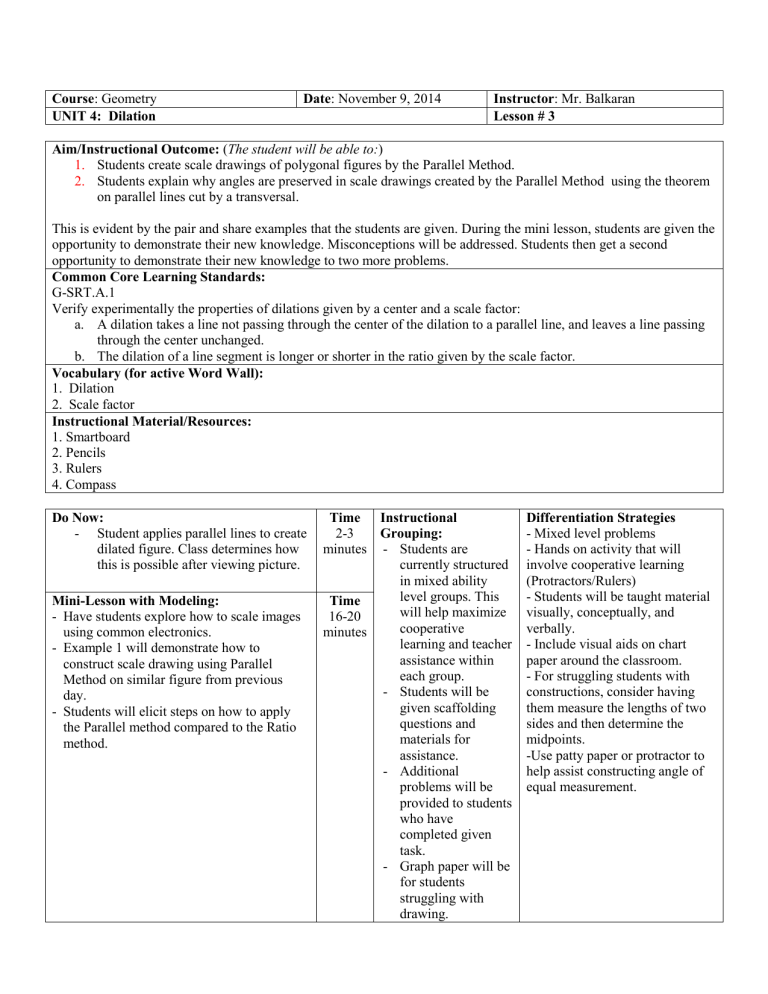
Course : Geometry Date : November 9, 2014 Instructor : Mr. Balkaran
UNIT 4: Dilation Lesson # 3
Aim/Instructional Outcome: ( The student will be able to: )
1.
Students create scale drawings of polygonal figures by the Parallel Method.
2.
Students explain why angles are preserved in scale drawings created by the Parallel Method using the theorem on parallel lines cut by a transversal.
This is evident by the pair and share examples that the students are given. During the mini lesson, students are given the opportunity to demonstrate their new knowledge. Misconceptions will be addressed. Students then get a second opportunity to demonstrate their new knowledge to two more problems.
Common Core Learning Standards:
G-SRT.A.1
Verify experimentally the properties of dilations given by a center and a scale factor: a.
A dilation takes a line not passing through the center of the dilation to a parallel line, and leaves a line passing through the center unchanged. b.
The dilation of a line segment is longer or shorter in the ratio given by the scale factor.
Vocabulary (for active Word Wall):
1.
Dilation
2.
Scale factor
Instructional Material/Resources:
1. Smartboard
2. Pencils
3. Rulers
4. Compass
Do Now:
Student applies parallel lines to create dilated figure. Class determines how this is possible after viewing picture.
Mini-Lesson with Modeling:
-
-
-
Have students explore how to scale images using common electronics.
Example 1 will demonstrate how to construct scale drawing using Parallel
Method on similar figure from previous day.
Students will elicit steps on how to apply the Parallel method compared to the Ratio method.
Time
2-3 minutes
Time
16-20 minutes
Instructional
Grouping:
Students are currently structured in mixed ability level groups. This will help maximize cooperative learning and teacher assistance within each group.
Students will be
given scaffolding questions and materials for assistance.
Additional problems will be provided to students who have completed given task.
Graph paper will be for students struggling with drawing.
Differentiation Strategies
- Mixed level problems
- Hands on activity that will involve cooperative learning
(Protractors/Rulers)
- Students will be taught material visually, conceptually, and verbally.
- Include visual aids on chart paper around the classroom.
- For struggling students with constructions, consider having them measure the lengths of two sides and then determine the midpoints.
-Use patty paper or protractor to help assist constructing angle of equal measurement.
Student Work Period/Learning Activity:
Students will work on constructing scaled drawings based on demonstrated example problems one and two. Students who have completed exercise problem one and two will move on to complete exercise problems three and four.
Time
16-20 minutes
Time
5 minutes
Higher Order Questions
1.
What is a scaled factor?
2.
How can we construct a scale drawing of an image?
3.
What properties do a new scale drawing share with the original figure?
4.
How can we verify whether A’B’C’D’E’ is really a scale drawing?
Questions will be asked during the mini lesson to assure students are exposed to a deep understanding of the content before applying the concepts.
Reflection on Lesson Summary:
How do we create scale drawings using the Parallel Method?
Assessment:
Do Now Assessment
Peer assessment
Exit Slip
Homework:
Create their own example.
WICOR Lesson Plan Tool
Standard(s)/Objective(s):
1.
Students create scale drawings of polygonal figures by the Parallel Method.
2.
Students explain why angles are preserved in scale drawings created by the Parallel
Method using the theorem on parallel lines cut by a transversal.
Essential Question: How do we create scale drawings using the Parallel Method?
Materials: Smartboard, pencils, compass, protractors, rulers and patty paper.
AVID Method Strategies
W Writing
How will students use writing as a tool of learning?
Students will use writing to explain their solutions using vocabulary that they have learned from the past and present.
Students will produce…
- Students will produce work with proper reasoning to the solution that they have provided.
I Inquiry
What questions will I ask?
How will I facilitate students asking questions and encourage higher-level thinking?
C Collaboration
How will I facilitate student collaboration?
O Organization
How is organization part of the lesson? What tools will students use to ensure organization?
R Reading
What will students read?
What strategies will I use to facilitate critical reading?
-
-
-
-
Questioning why the material is important and connecting it with material that they know already.
Have students explain their reasoning using proper vocabulary.
Students will be working together on teaching each other their prior knowledge to the task at hand.
Students will then formulate proper method for constructing scale drawing.
Organization links with time management. Each task and activity will be tracked for maximum engagement. Students will be expected to reach a goal at the end of each activity.
Students will read information that is given to them. Information that is given to them will be in the form of words, symbols and/or diagrams.
- Students will produce proper explanation on their solutions.
Creating a student centered environment, students will question the solutions of other students.
- Detailed instructions on constructing scaled drawings. It will be collaboration on both students that are working together.
- Students will provide collaborative solutions at the end of each task to address classroom activity grade.
- Understanding and explanations on key words, symbols and/or diagrams.
